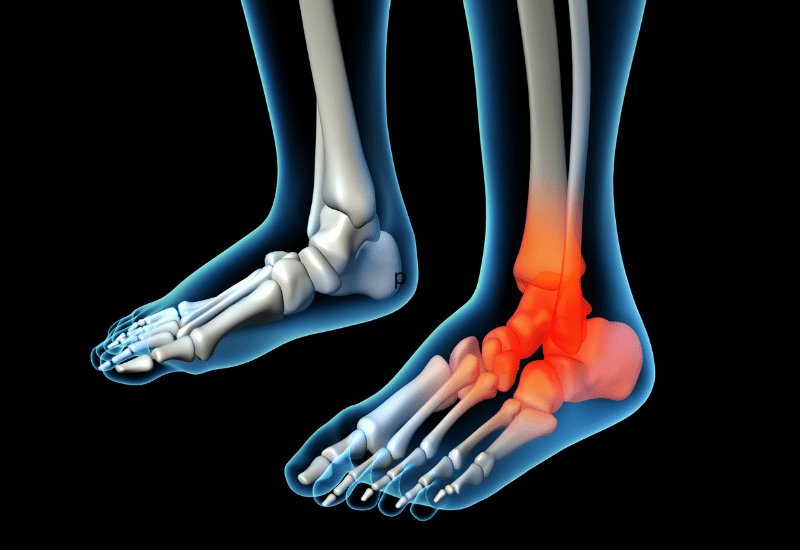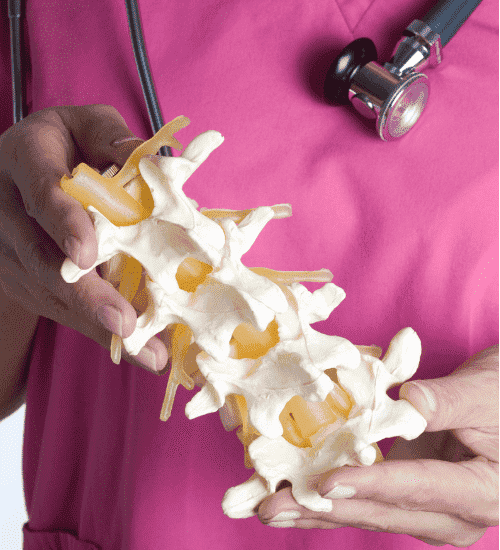- (213) 369-4583
- Monday - Friday
- 9 am - 5 pm
Can I have foot pain due to a Back Injury?

Dec 22, 2022
The connection between the back and foot might seem remote but it is not. It is possible to experience foot pain due to back injury as there are nerves in your spine that extend all the way down to your legs and feet. Any injury to the spine can damage these nerves and the effect can trickle down to the feet. However, foot pain due to back injury is different from normal pain. Coming next, you will learn the connection between a back injury and foot pain and how you could tell if your the pain is due to a problem in your spine.
See a Neurosurgeon in Los Angeles for the treatment of aching foot due to back injury: You can schedule an appointment with Dr. Moksha Ranasinghe who is the lead neurosurgeon at Southern California Brain & Spine Surgery. Fill out the contact form or call the clinic at (213)-369 4583.
Symptoms of Foot Pain due to Back Injury

Normal foot pain due to an ankle twist or a minor injury goes away within 4-5 days with little massage and care. Spinal injury-induced foot pain worsens over time. Such foot pain exhibits the following symptoms;
- Numbness and tingling in the foot
- Pain that radiates from the lower back
- Weakness in legs
- Numbness in the area around the hip, calf, and leg
What Causes Foot Pain?
Spinal nerves in the lumbar (lower) spine travel all the way down to your legs and end at your feet. The pain is normally caused when there is a compression or irritation in the nerve roots. Other than this, nerve compression in the hip, knee or foot itself can also cause the pain.
Following are some of the most common reasons that can cause nerve compression in the lumbar spine leading to foot pain.
Disc degeneration is one of the main causes of lower back pain that can lead to foot pain. Disc degeneration causes various diseases, such as facet joint syndrome in the lower back, scoliosis, bone spurs, osteoarthritis, among others. This condition occurs when discs in vertebrae degenerate due to wear and tear as a result of aging. These discs have gel-like fluid in them that slips through the crack of deteriorated discs and compresses the nearby spinal nerves.
- Lumbar Spinal Stenosis
Spinal stenosis occurs when the space inside the vertebrae narrows due to factors such as arthritis, herniated disc, osteophytes, etc. Symptoms of spinal stenosis take time to appear. Normally, people with ages above 50 are diagnosed with spinal stenosis but it can also occur in young people in case of direct injury to the spine.
- Disc Herniation
Vertebrae have soft jelly-like discs between them to provide stability and flexibility to the spine. Disc herniation occurs when the soft part within these discs slips out due to a crack in the outer port portion of the disc. It creates a bulge that can compress nerves in the lower spine causing pain.
- Spondylolisthesis
Spondylolisthesis occurs when a vertebra in the spine slips onto the other vertebra below/above it. When a vertebra slips out of its position, it can exert pressure on the neighboring nerves causing nerve compression. Spondylolisthesis can occur anywhere in the spine but it commonly occurs in the lumbar spine.
Sciatica
This is one of the most common conditions associated with foot pain. It derives its name from the sciatic nerve that originates from your lower back and runs all the way down to your feet. One of the reasons mentioned above compresses this nerve, causing foot pain. You can tell apart the foot pain due to sciatica from regular foot pain by observing symptoms. If your foot pain is accompanied by pain in your lower back and you sense tingling and numbness in the foot, it is most probably due to sciatica.
Treatment of Foot Pain due to Back Injury
Depending upon the cause of the pain, different treatment methods can be used. Two major categories of treatment for foot pain due to back injury are; nonsurgical or conservative treatments and surgical treatments.
Conservative Treatments
If the nerve compression is not severe, different combinations of conservative treatments can help manage the pain. Following are some of the most commonly used conservative treatments;
- Modifications in physical activity
- Nonsteroidal and anti-inflammatory medications
- Low-impact stretching exercises
- Massages and therapies
Surgical Treatments
Treating the underlying issue with surgery becomes necessary if nonsurgical methods are ineffective. By now, you must have realized that the major reason for foot pain due to back injury is compression in the lumbar spine. Surgery becomes necessary to decompress the nerves and relieve patients of pain. For instance, microdiscectomy treats a herniated disc, while artificial disc replacement surgery replaces a degenerated disc.
Surgery is a permanent solution to nerve compression however, it comes with risks. At times, patients avoid surgery due to fears of post-surgical infections, bleeding, or anesthesia.
Read more about different surgical and non-surgical treatments for back pain
Minimally Invasive Surgical (MIS) Methods
Open surgeries have many drawbacks; excessive blood loss and long recovery periods to name a few. To avoid these, neurosurgeons nowadays use less invasive techniques. Minimally invasive surgeries are less painful and have a fast recovery. However, not all conditions are treated with MIS. Your doctor will decide which approach to go with. He/she takes into account a number of factors; location and severity of the injury, age of the patient, patient’s preference, and medical history.


